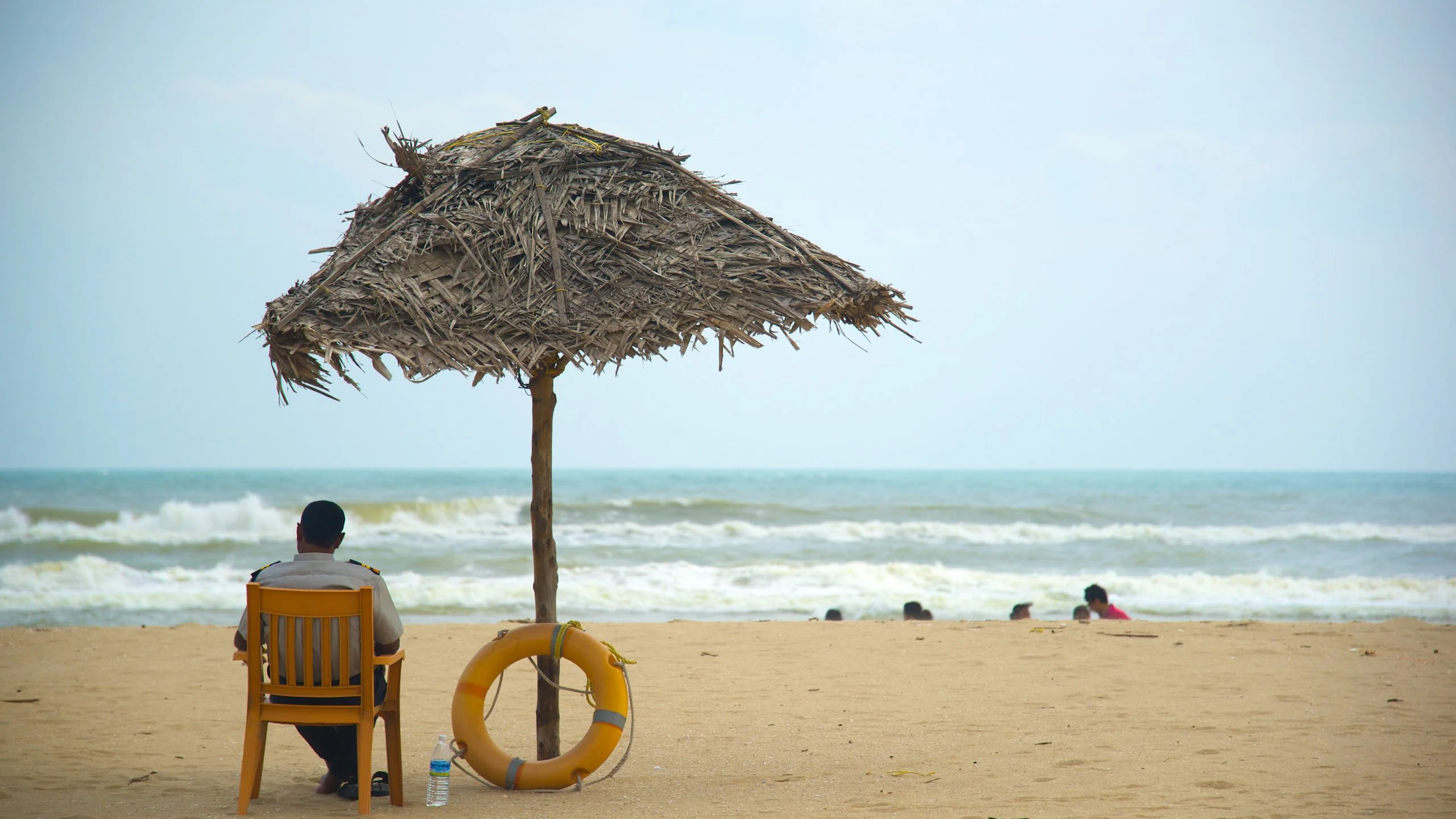
Paradise Beach, also known as Plage Paradiso, is one of Puducherry’s most pristine and picturesque stretches of sand. Accessible primarily by a short boat ride from the Chunnambar Boat House, this secluded beach greets visitors with golden sands, swaying coconut palms, and the gentle roar of the Bay of Bengal. Its unspoiled charm and tranquil surroundings make it a favorite spot for both relaxation and photography.
The beach is well-loved for its calm atmosphere, perfect for unwinding away from the bustling city. While swimming is permitted in certain areas, the currents can be strong, so visitors should exercise caution. Adventure seekers can also try activities like beach volleyball, kayaking, or simply strolling along the shore while watching the waves dance in the sun.
Since it’s less commercialized, Paradise Beach retains a raw, natural beauty. The mornings here are especially magical, with the rising sun casting a golden glow over the water, creating postcard-perfect views. Snacks and refreshments are available at small stalls, but carrying your own essentials is recommended for a longer stay.
For those who want to truly connect with the sea, Paradise Beach offers the ideal blend of peaceful seclusion and natural beauty, making it one of Puducherry’s must-visit destinations.
Best time to visit: October–March
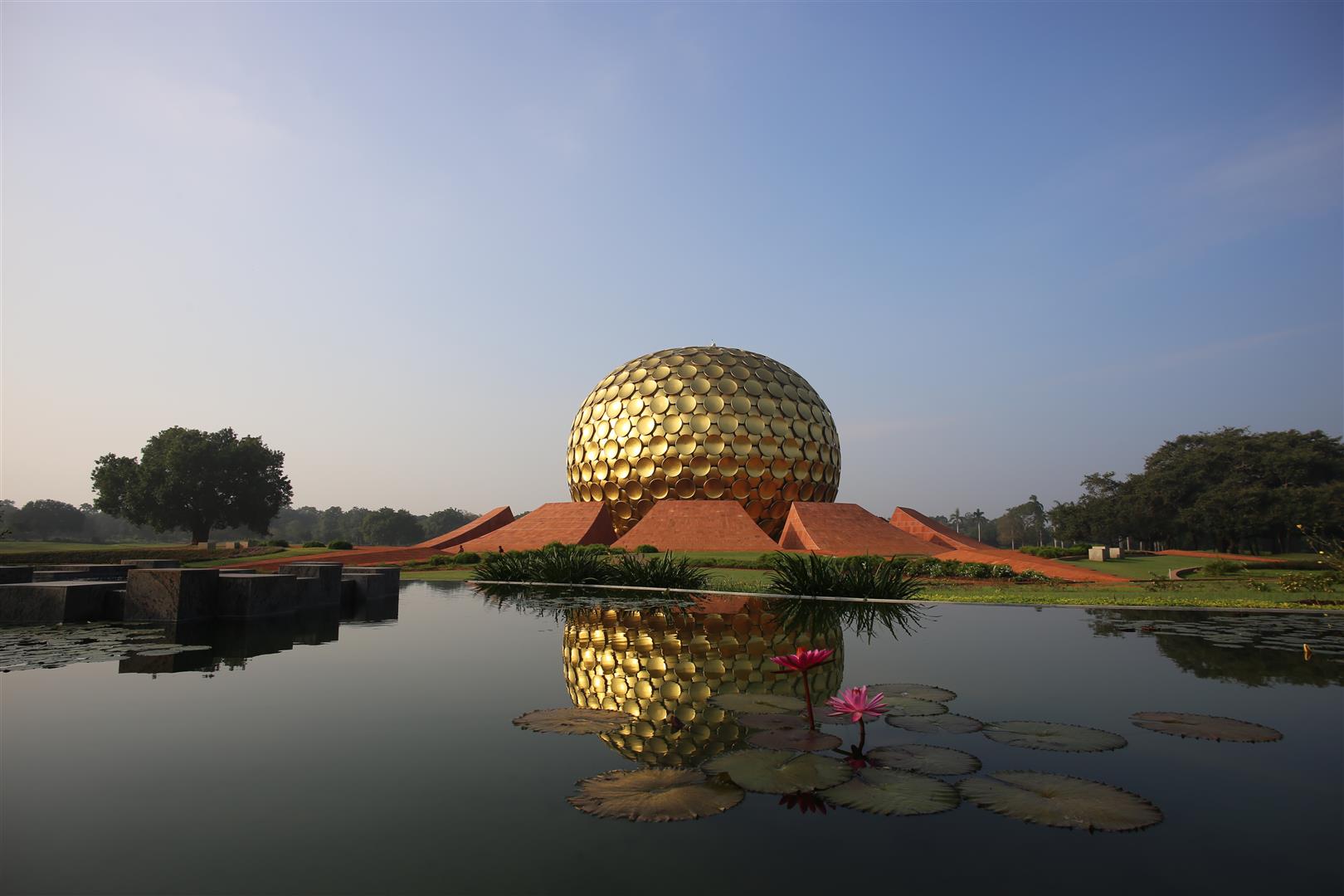
Auroville, located about 12 km from Puducherry, is an experimental township founded in 1968 by Mirra Alfassa, known as “The Mother.” Designed by architect Roger Anger, it was envisioned as a universal city where people from all nations could live in peace and harmony, beyond politics, religion, and national boundaries. The township’s centerpiece, the Matrimandir, is a striking golden-domed structure surrounded by lush gardens, serving as a place for silent concentration and spiritual reflection.
Spread across a large area, Auroville is home to residents from over 50 countries, each contributing to a self-sustaining community through organic farming, handicrafts, renewable energy projects, and educational initiatives. Visitors can explore its vibrant cafés, art galleries, and boutiques that sell handmade goods, all supporting local artisans and sustainable living.
Nature lovers will appreciate Auroville’s serene green belts, dotted with forests, farms, and eco-friendly guesthouses. The atmosphere encourages introspection, mindfulness, and an escape from the chaos of modern life. Guided tours are available for those who wish to learn about the community’s history, philosophy, and ongoing projects.
Whether you seek spiritual growth, artistic inspiration, or simply a peaceful retreat, Auroville offers an experience that blends idealism with practical sustainability, making it a unique cultural landmark in South India.
Best time to visit: November–March
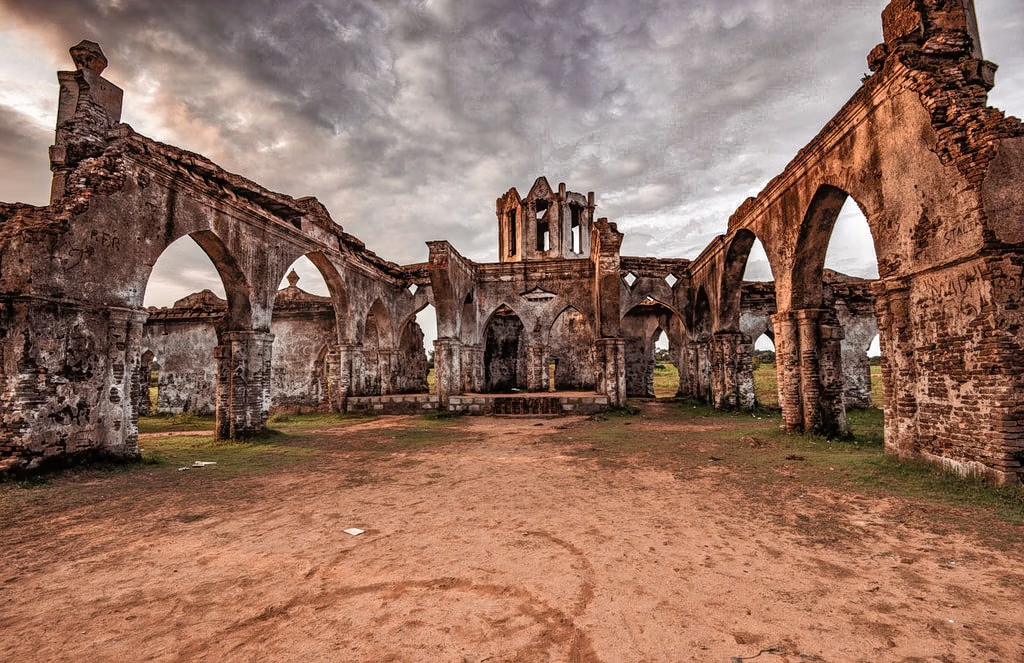
Arikamedu, situated about 7 km from Puducherry, is an archaeological site that reveals the rich history of Indo-Roman trade in ancient India. Excavations have shown that this settlement flourished between the 1st century BCE and the 2nd century CE, serving as a major port where Roman merchants exchanged goods with local traders. Pottery, beads, glassware, and amphorae found here testify to the vibrant cultural and commercial exchanges of the time.
The site offers a fascinating glimpse into a period when India was well-connected to the Mediterranean world. Visitors can still see the remnants of ancient brick structures, warehouses, and residential areas that hint at Arikamedu’s once-bustling maritime activity. Its strategic location along the Ariyankuppam River made it an ideal docking point for ships traveling across the Bay of Bengal.
Today, Arikamedu is a serene, partially overgrown ruin that carries an air of mystery and timelessness. The quiet surroundings and sparse tourist activity make it an ideal destination for history enthusiasts, photographers, and those who enjoy exploring offbeat sites. Information boards and museum displays nearby help contextualize the archaeological discoveries made here.
A walk through Arikamedu feels like stepping back in time, imagining the ships unloading Roman wine jars and Indian spices centuries ago—a forgotten chapter of global trade hidden in the greenery of Puducherry.
Best time to visit: November–March
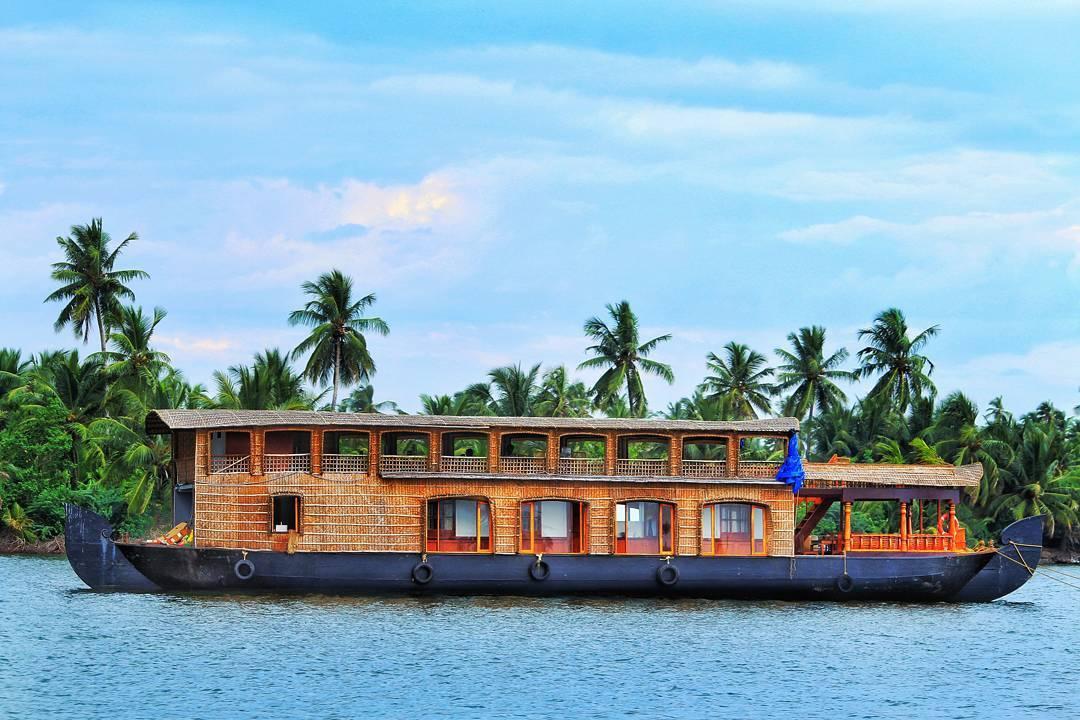
Chunnambar Boathouse, located about 8 km from Puducherry, is a popular spot for enjoying the scenic beauty of the region’s backwaters. Situated along the banks of the Chunnambar River, it serves as the starting point for boat rides to the stunning Paradise Beach. The lush coconut groves, calm waterways, and cool breeze create the perfect setting for a relaxing escape from city life.
The boathouse offers a variety of boating experiences, including motorboats, speedboats, and even houseboats, catering to both adventure seekers and leisure travelers. As you cruise along the serene river, you can spot vibrant birdlife and enjoy views of the surrounding greenery. The journey itself is as captivating as the destination, making it a must-do activity in Puducherry.
Besides boating, Chunnambar is also a popular picnic and camping site. The tourism complex here provides facilities for overnight stays, with cozy accommodations right by the water. Visitors often enjoy lounging by the riverside, taking in the tranquil ambiance while sipping fresh coconut water.
Whether you’re heading to Paradise Beach or just want to drift peacefully on the backwaters, Chunnambar Boathouse offers an unforgettable experience of Puducherry’s natural charm.
Best time to visit: November–March
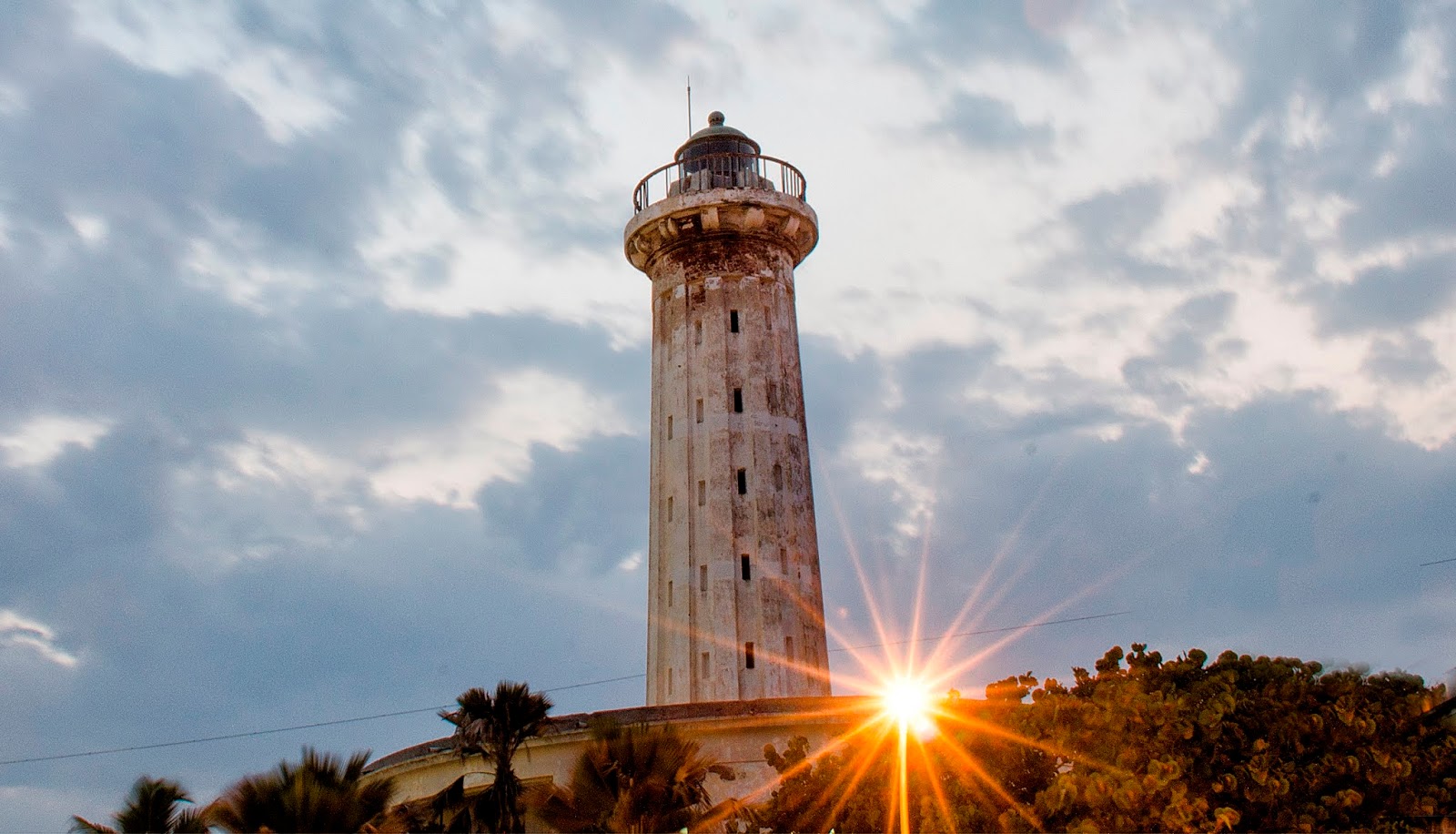
The Old Lighthouse of Puducherry is a striking reminder of the city’s colonial heritage and maritime history. Built in the 19th century during French rule, this cylindrical stone structure once served as the primary navigational aid for ships approaching the Coromandel Coast. Standing near the sea promenade, its weathered yet sturdy presence tells stories of an era when Puducherry was a bustling trading port.
Unlike modern lighthouses, the Old Lighthouse has a distinctive architectural style, with a broad base tapering upward to a lantern room that once housed an oil lamp. Today, it no longer functions as a guide for ships but remains a popular historical landmark and a favorite among photographers for its vintage charm and picturesque seaside backdrop.
Visitors often pair a stop at the Old Lighthouse with a leisurely walk along the Promenade Beach, enjoying the soothing sound of waves and views of the Bay of Bengal. The area comes alive in the evenings when the cool sea breeze and warm street lighting create a magical atmosphere.
For history enthusiasts, the Old Lighthouse isn’t just a structure—it’s a piece of Puducherry’s soul, standing tall through centuries of change.
Best time to visit: October–February
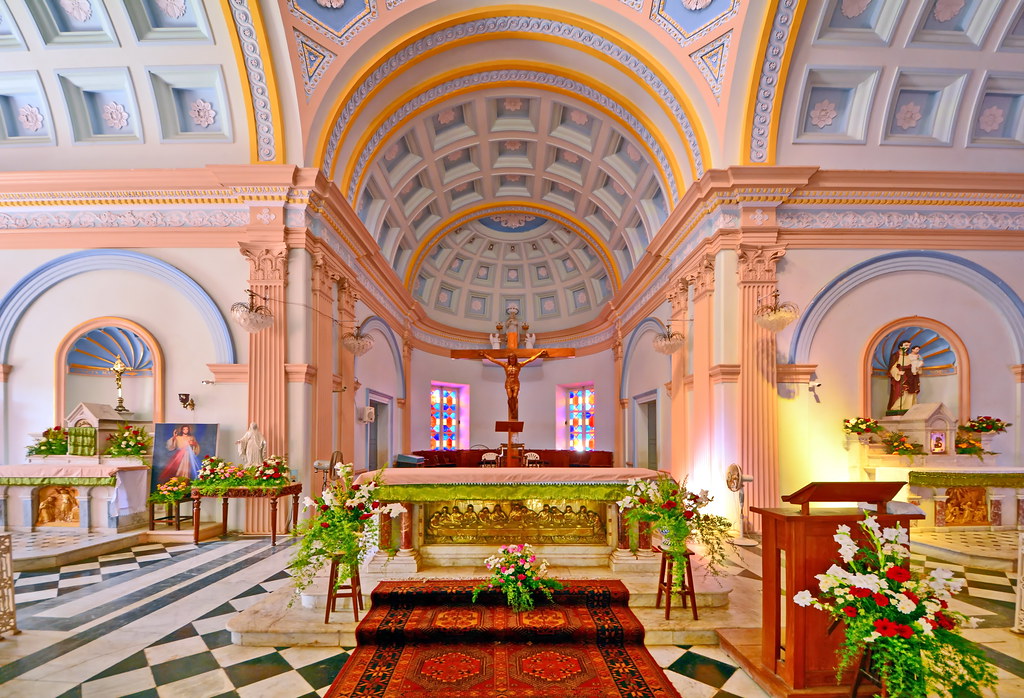
Eglise de Notre Dame des Anges, located in the heart of White Town, Puducherry, is one of the city’s most beautiful and historically significant churches. Built in 1855 by the French, this Roman Catholic church is a stunning example of Greco-Roman architecture with a pastel-pink façade, tall Corinthian columns, and symmetrical design that reflects the elegance of French colonial influence. Its name translates to Church of Our Lady of Angels, dedicated to the Virgin Mary.
The interiors are equally mesmerizing, featuring stained-glass windows that filter sunlight into a kaleidoscope of colors and a central altar adorned with white marble brought all the way from Italy. The church is one of only a few in India where mass is still conducted in three languages—French, Tamil, and English—reflecting Puducherry’s multicultural identity.
Situated close to the Bay of Bengal, the church’s location adds to its charm, making it a peaceful escape from the city’s bustle. Early mornings and evenings are especially serene here, with the sound of church bells mingling with the distant waves.
Eglise de Notre Dame des Anges isn’t just a place of worship—it’s a timeless symbol of Puducherry’s spiritual harmony and colonial legacy.
Best time to visit: October–March
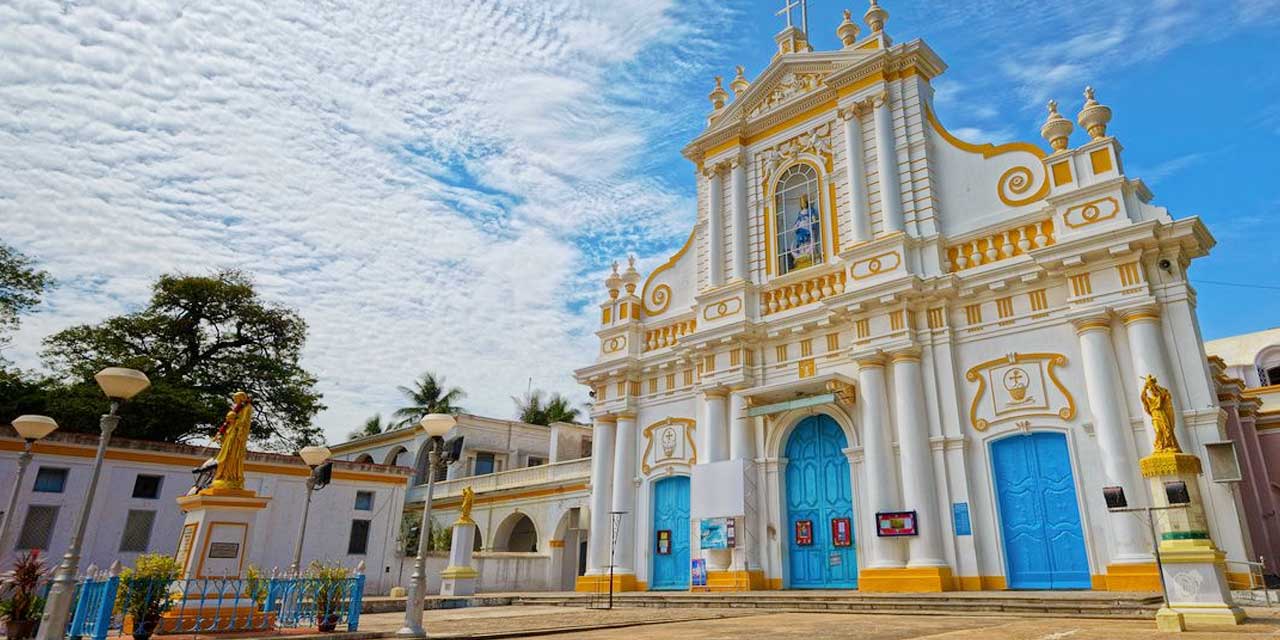
The Immaculate Conception Cathedral, often called Samba Kovil by locals, is one of the oldest and most important churches in Puducherry. Its origins trace back to 1692 when the first Jesuit missionaries built a modest chapel, later reconstructed multiple times due to destruction during colonial conflicts. The current structure, completed in 1791, stands as a striking example of Portuguese-style architecture blended with subtle French influences.
The cathedral’s pristine white façade, adorned with arched windows and a central bell tower, creates a sense of grandeur and calm. Inside, the high vaulted ceilings, ornate altars, and beautiful statues of saints invite quiet reflection. The main altar is dedicated to the Immaculate Conception of the Virgin Mary, and the church continues to host daily masses, drawing both devotees and visitors.
Located on Mission Street, the cathedral’s surroundings retain a quaint old-town charm. The gentle toll of its bells can be heard echoing across the neighborhood, especially during feast days when the church comes alive with processions, music, and vibrant decorations.
Steeped in over three centuries of history, the Immaculate Conception Cathedral is not just a religious site but a living witness to Puducherry’s colonial and spiritual heritage.
Best time to visit: October–March
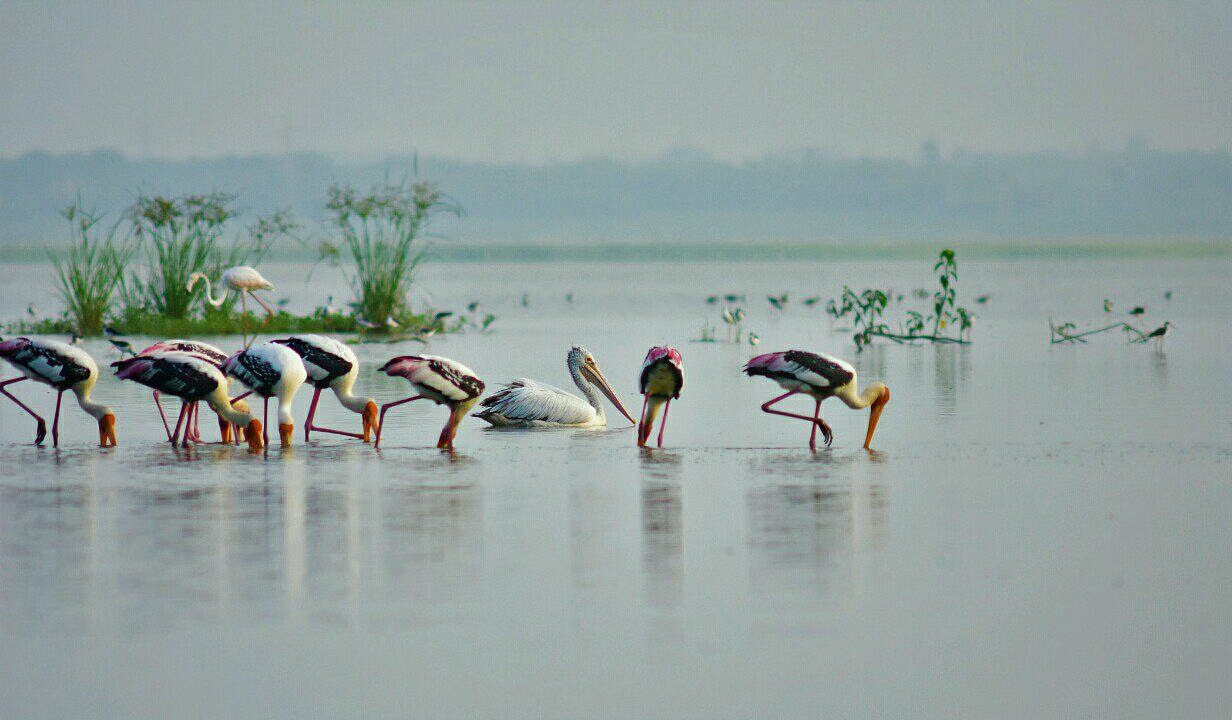
Ousteri Wetland and National Park, located about 10 km from Puducherry, is a serene freshwater lake and wetland ecosystem spread across Puducherry and Tamil Nadu. Recognized as one of the most important wetlands in South India, it serves as a haven for migratory and resident birds. Declared a biodiversity conservation site, Ousteri is a Ramsar-recognized wetland, attracting nature enthusiasts and ornithologists from all over the country.
The park’s tranquil waters are fringed by lush vegetation, making it an ideal breeding and feeding ground for over 40 species of birds, including open-bill storks, white ibises, painted storks, and pelicans. Early mornings and late afternoons are the best times to spot these feathered beauties, often silhouetted against the glowing sky. The wetland is also home to rich aquatic life and supports the local fishing community.
Tourists can enjoy boating here, allowing for close-up views of the lake’s biodiversity. The calm, reflective waters, combined with the chirping and calls of waterfowl, create a deeply peaceful experience. Ousteri is also a popular photography spot, especially during the winter migratory season when the lake teems with avian life.
Beyond its scenic charm, Ousteri Wetland plays a crucial role in maintaining the region’s ecological balance, acting as a natural flood control system and groundwater recharge zone. Its preservation is vital for both wildlife and the people who depend on it.
Best time to visit: November–February
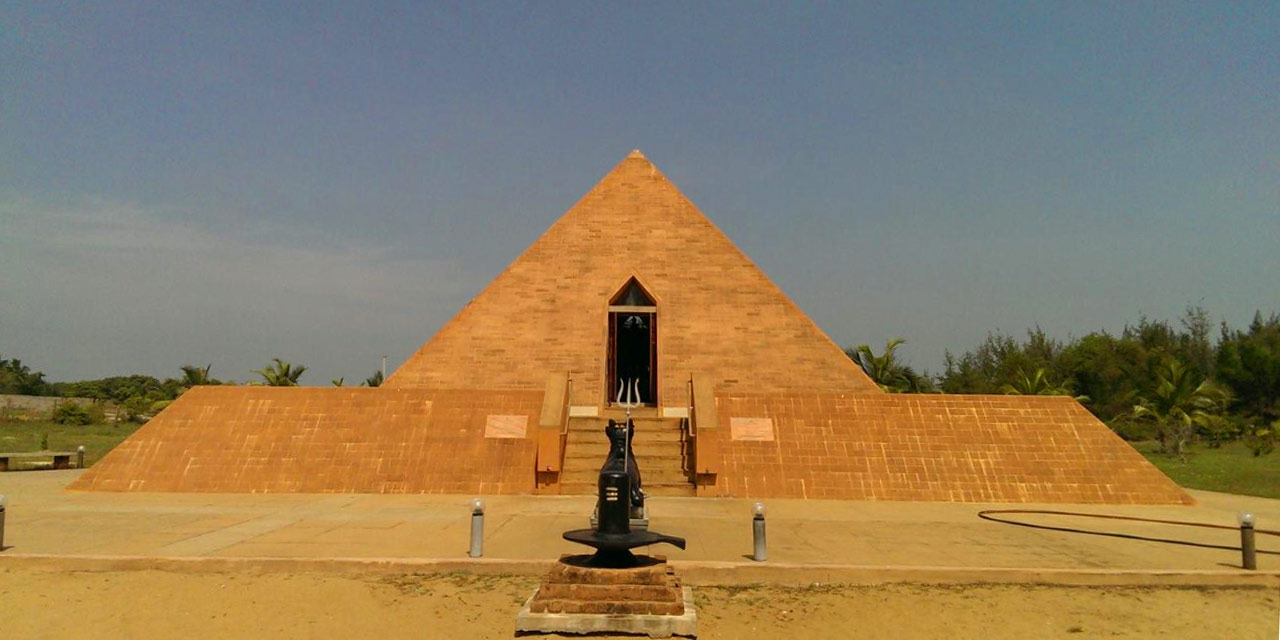
Sri Karaneswara Nataraja Temple, located in Pudukuppam near Puducherry, is a striking and unconventional temple dedicated to Lord Shiva in his cosmic dancer form, Nataraja. Unlike traditional South Indian temples with gopurams, this temple stands out for its modern, pyramid-shaped architecture, said to be inspired by Egyptian pyramids. This design is believed to channel spiritual energy and promote meditation.
Built close to the Bay of Bengal coastline, the temple offers a tranquil atmosphere, blending spirituality with the calming sounds of the sea. The sanctum sanctorum houses the idol of Nataraja, symbolizing the eternal cycle of creation, preservation, and destruction. The open surroundings and minimalistic design create a peaceful environment for prayer and contemplation.
The temple is not just a place of worship but also an architectural curiosity, attracting tourists, photographers, and spiritual seekers alike. The pyramid shape is aligned in a way that is believed to amplify positive vibrations, making it a serene spot for meditation.
Visitors often combine their trip here with a visit to the nearby beaches, making it both a spiritual and scenic getaway. The temple’s unique style and coastal location make it a rare gem among South Indian temples.
Best time to visit: October–March
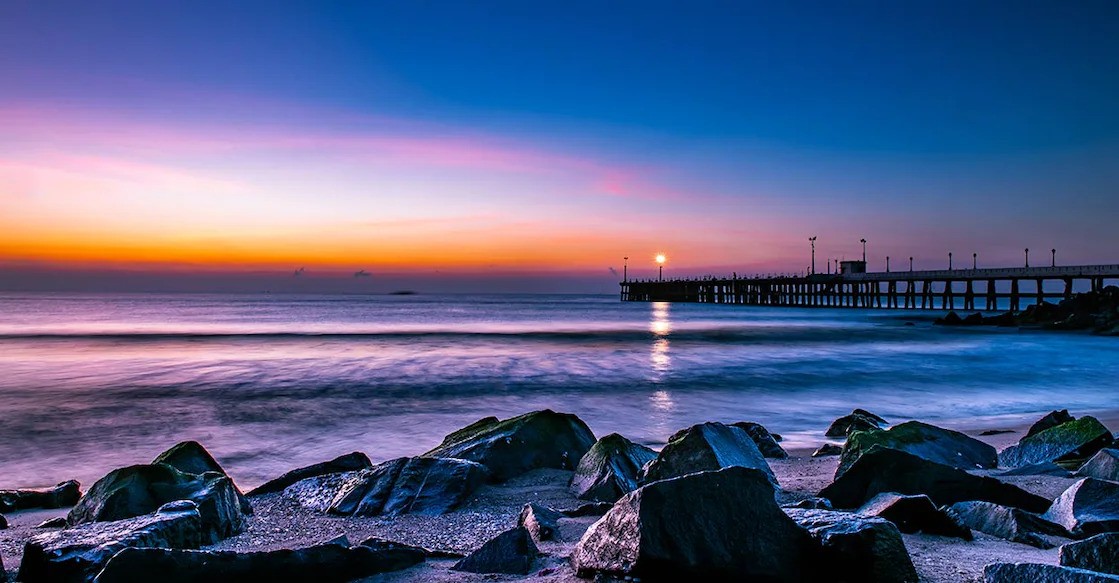
Rock Beach, stretching along Puducherry’s Promenade, is a popular seaside spot that perfectly combines natural beauty with leisurely urban charm. The beach is characterized by rocky formations along the shoreline, which break the waves and create a picturesque landscape ideal for photography and peaceful walks. Unlike crowded sandy beaches, Rock Beach offers a slightly rugged, raw coastal experience.
Visitors flock here during early mornings and evenings to enjoy the cool sea breeze, watch the sunrise or sunset, and listen to the rhythmic crashing of waves. The promenade alongside the beach is lined with benches, sculptures, and statues, making it a perfect place for relaxation and people-watching. Local vendors also offer snacks and souvenirs, adding to the beachside experience.
The area is well-suited for jogging, cycling, or just taking a contemplative stroll while enjoying views of the Bay of Bengal. Festivals and events held nearby occasionally add vibrancy to the surroundings, but the beach largely maintains its serene, calming ambiance.
Rock Beach is more than just a coastal attraction; it is a social and cultural hub where locals and tourists converge to appreciate Puducherry’s seaside charm.
Best time to visit: October–March
